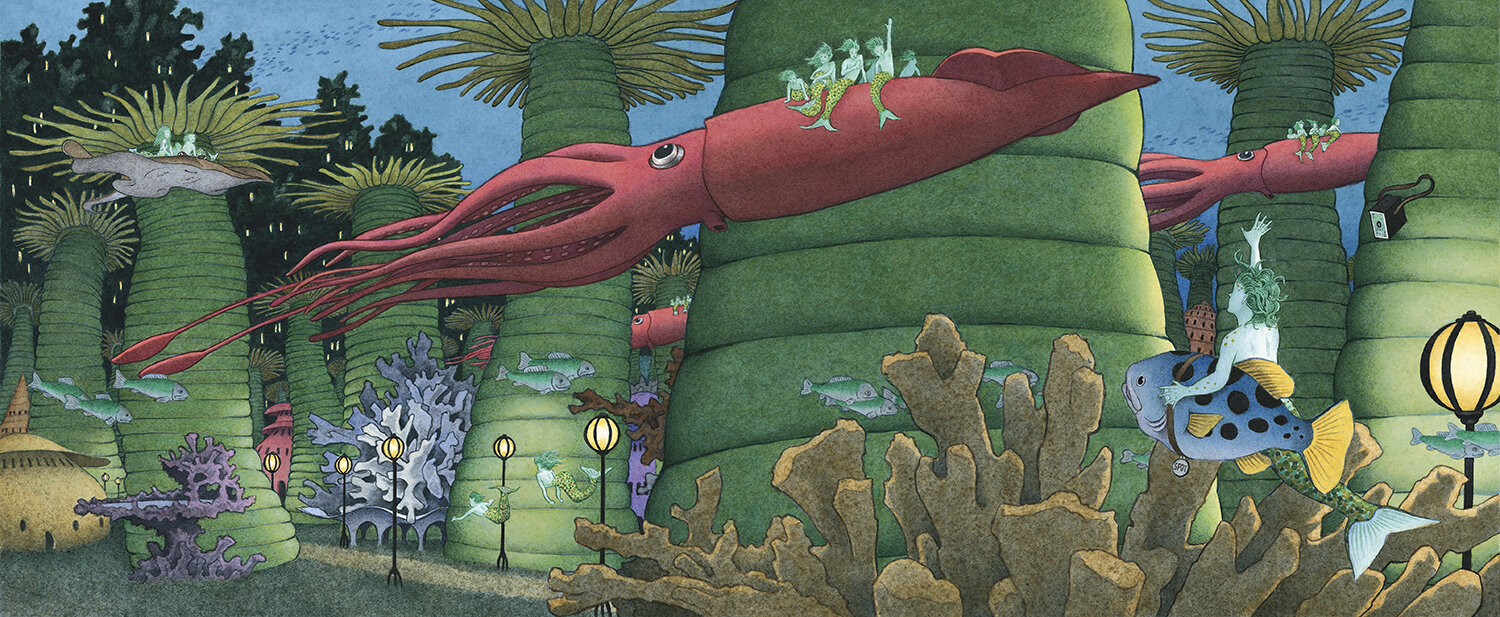
David Wiesner
David Wiesner: In the Making
November 4-8, 2019
In collaboration with The Swiacki Children’s Literature Festival, Mazmanian Gallery presents David Wiesner: In the Making. The exhibition, which includes reproductions of Wiesner’s work at every stage of the picture-book making process, focuses on the creation of Flotsam (2006, Houghton Mifflin Harcourt). In Flotsam a bright, science-minded boy goes to the beach equipped to collect and examine flotsam—anything floating that has been washed ashore. Bottles, lost toys, small objects of every description are among his usual finds. But there's no way he could have prepared for one particular discovery: a barnacle-encrusted underwater camera, with its own secrets to share . . . and to keep. In the Making reveals how David Wiesner developed the story, characters, places, and imagery. In addition, the exhibition gives a sneak peak of Wiesner’s forthcoming book, Robobaby. Wiesner shares not only finished images from the book, but also records of his correspondence with his publisher and art director, Carol Goldenberg, giving us a glimpse into the multi-faceted and complex final stage of producing a book.
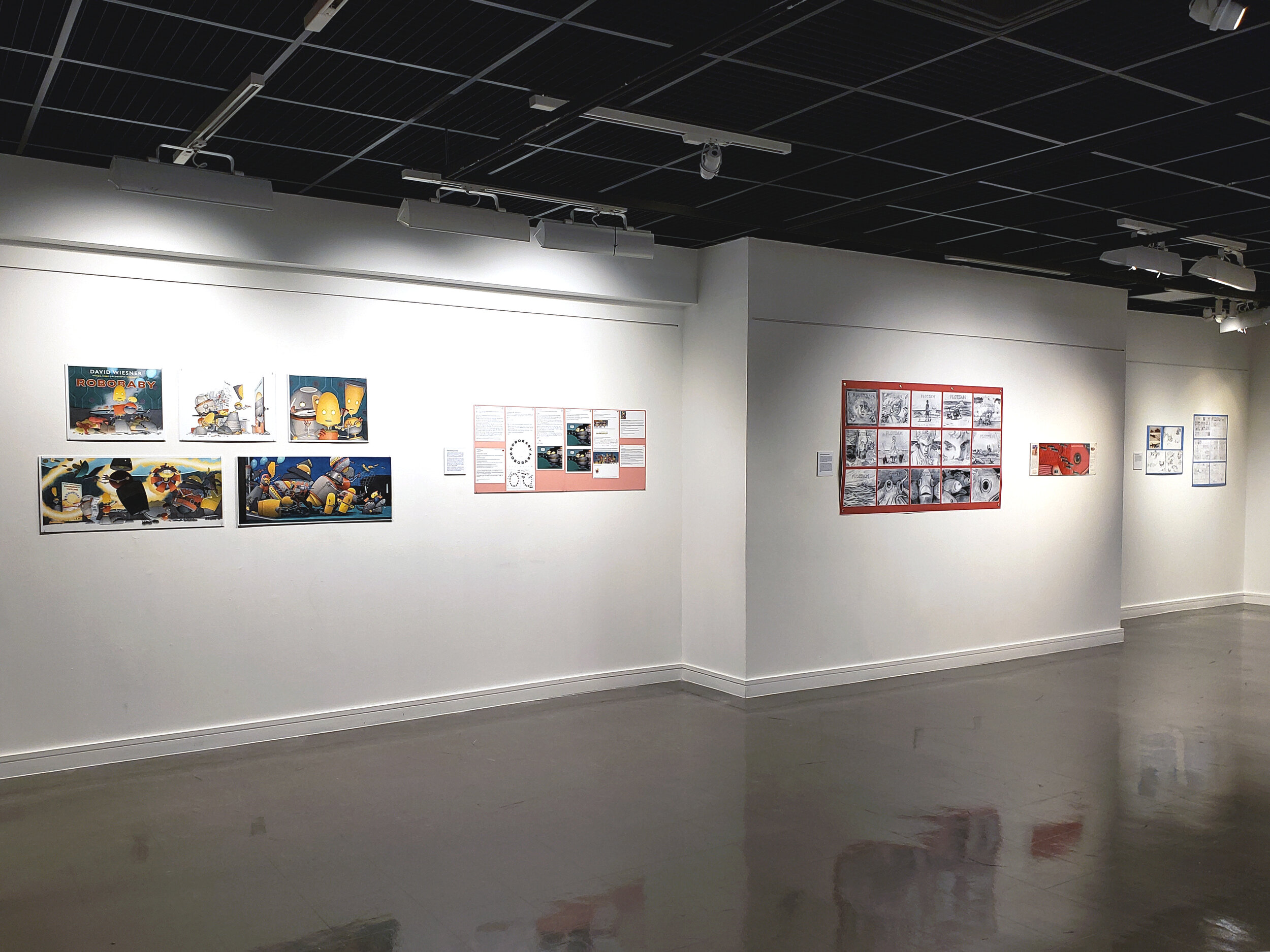
Installation Views of "In the Making"
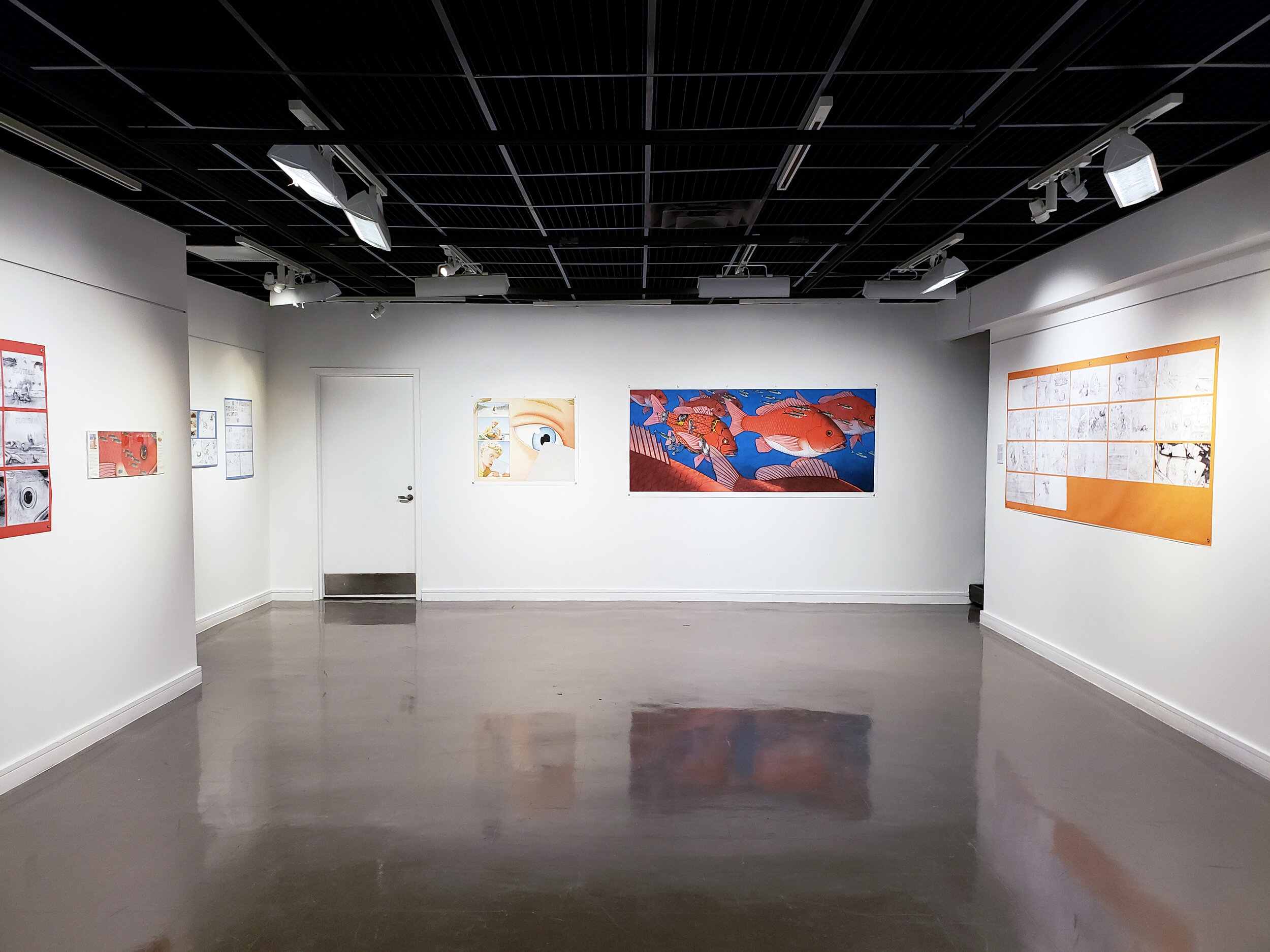
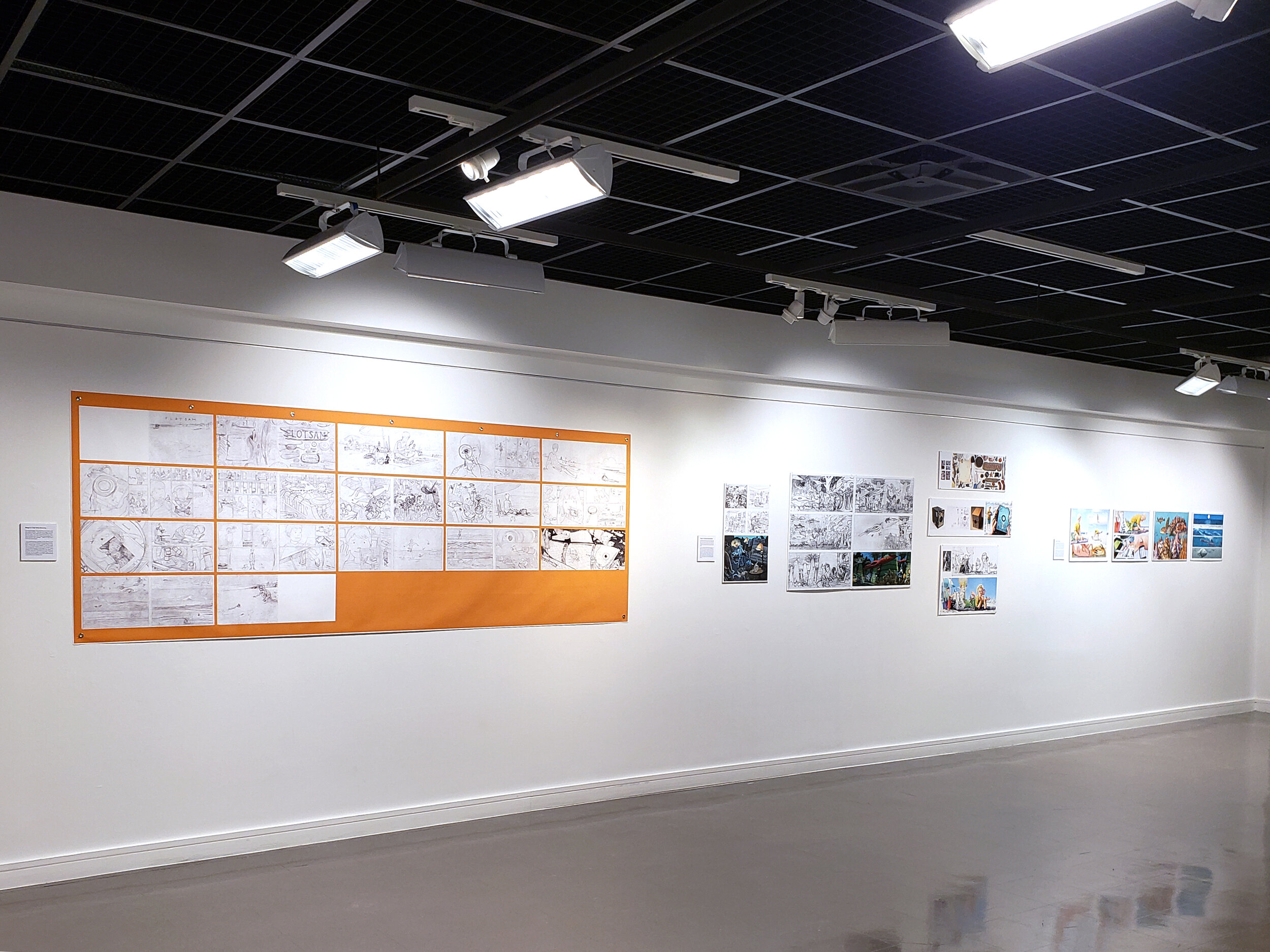

Flotsam, page 15 and pages 16-17
Cover Image Development: “The design of a picture book can encompass not only the pages where the story takes place, but also the cover, the title page, the endpapers, and even the binding. They can be used in many ways to help set up the story or add inviting or complementary imagery. I create many versions of most images in a book. I want to see all the possibilities before deciding on the composition and content. The jacket of a book is a special image. It has to grab the viewer and convey something about the book. It doesn’t have to show a lot of the story, but it has to show an intriguing essence of it. I draw everything I can think of, because I never know what interesting things will be revealed by pushing that search as far as it can go.” - David Wiesner
Sketchbook: “My bookmaking process goes through four general stages. The first is drawing thumbnail sketches in my sketchbook. Since the standard length of a picture book is thirty-two pages, I can see each of the individual pages as well as the complete book all on one page. Being able to see the parts and the whole together allows me to hold the entire concept in my mind at the same time. This is where I write the story.” -DW
Full Size Dummy: “The second stage of my process is to create a full size pencil dummy – the size and shape the final book will be. Here I add more visual detail and refine the story. I am not concerned with the drawings as being more than rough representations of what will be in the pictures – they are only story elements at this point. I am simultaneously working on the layout for the entire book and on individual double-page spreads. Each spread must convey a specific piece of the story. It must also move readers to turn the page and set up their reaction to the next spread. Do I want to build suspense at the page turn? Do I want readers to be surprised when they see what’s on the other side? Do I want them to laugh? Because there are so few pages in a picture book, the act of turning those pages is one of the most important considerations in creating one.” - DW
Drawing Development (Flotsam, page 19): “It is during the third stage that I begin to visually create the world of the story. Everything I draw still affects the story, but at this point I begin to pull from all the reference points that will shape the look and feel of the images. It is here that I also refine the characters and environment and determine the compositions of all the pages.” -DW
Drawing from Models (Flotsam pages 6-7): “I am in the school of thought that the best way to understand something is to see it, not a photograph of it, and to draw it. Drawing is the best way to understand the volume, shape, and functionality of a thing. To create an animal character, I want to see the skeleton of that animal so that I know how the joints move, their posture, etc. I make maquettes for reference for both characters and structures. They are fairly simple models, just enough to give me the ability to see the object from all angles and get a basic drawing that I can then refine how I see it. I can also light the models to see how the light falls across the object and determine shadows.” -DW
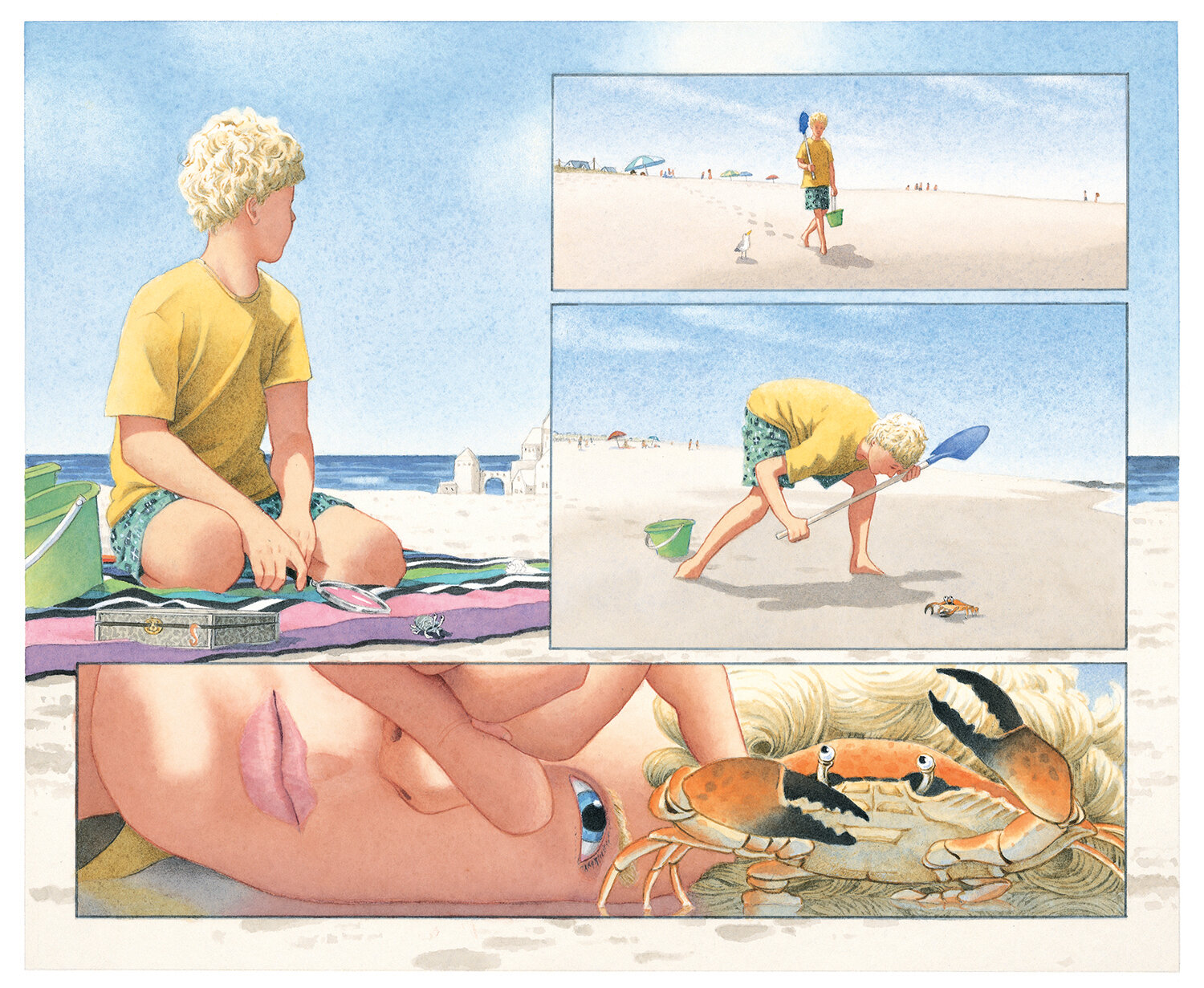
Flotsam, page 8
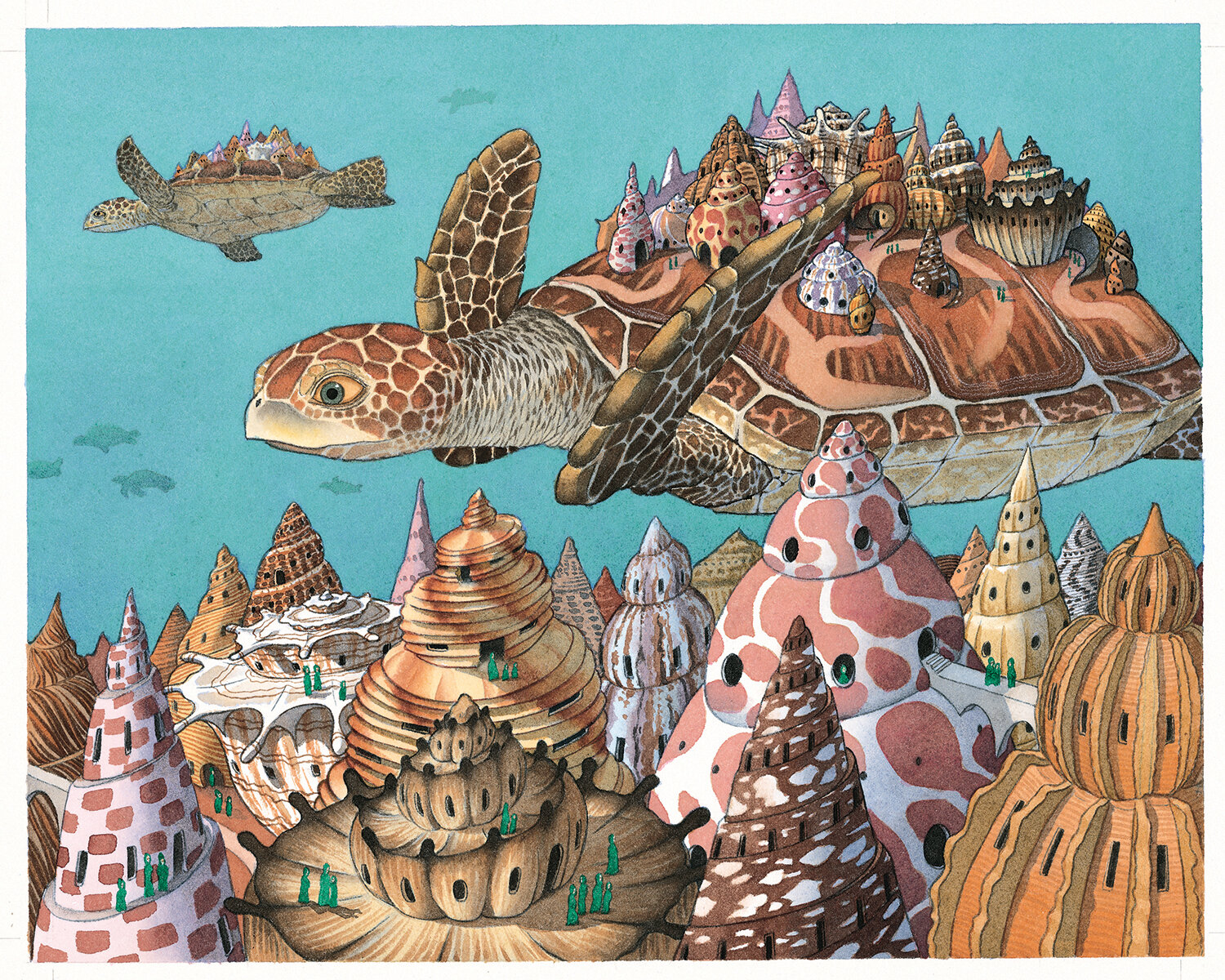
Flotsam, page 20
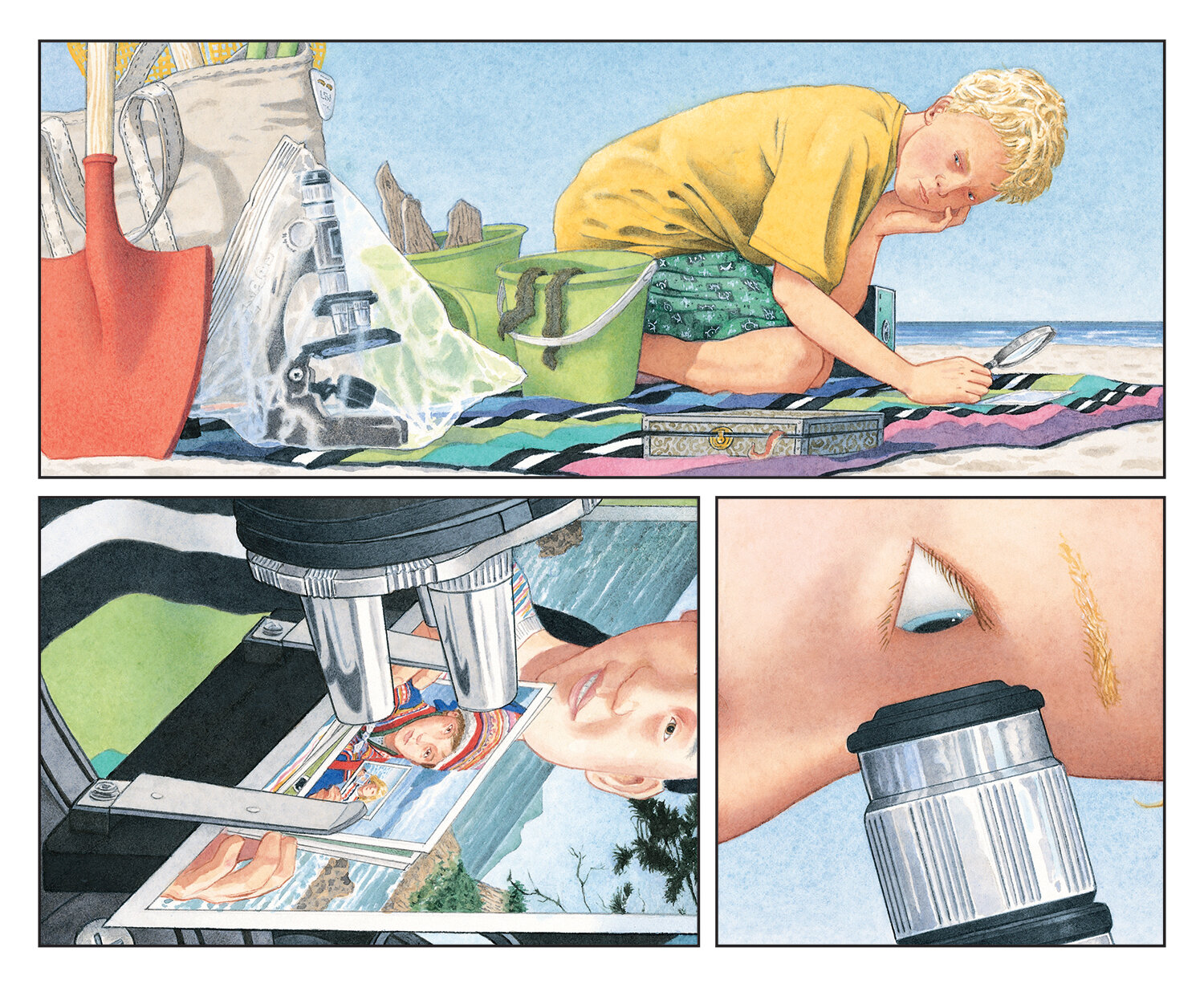
Flotsam, page 27
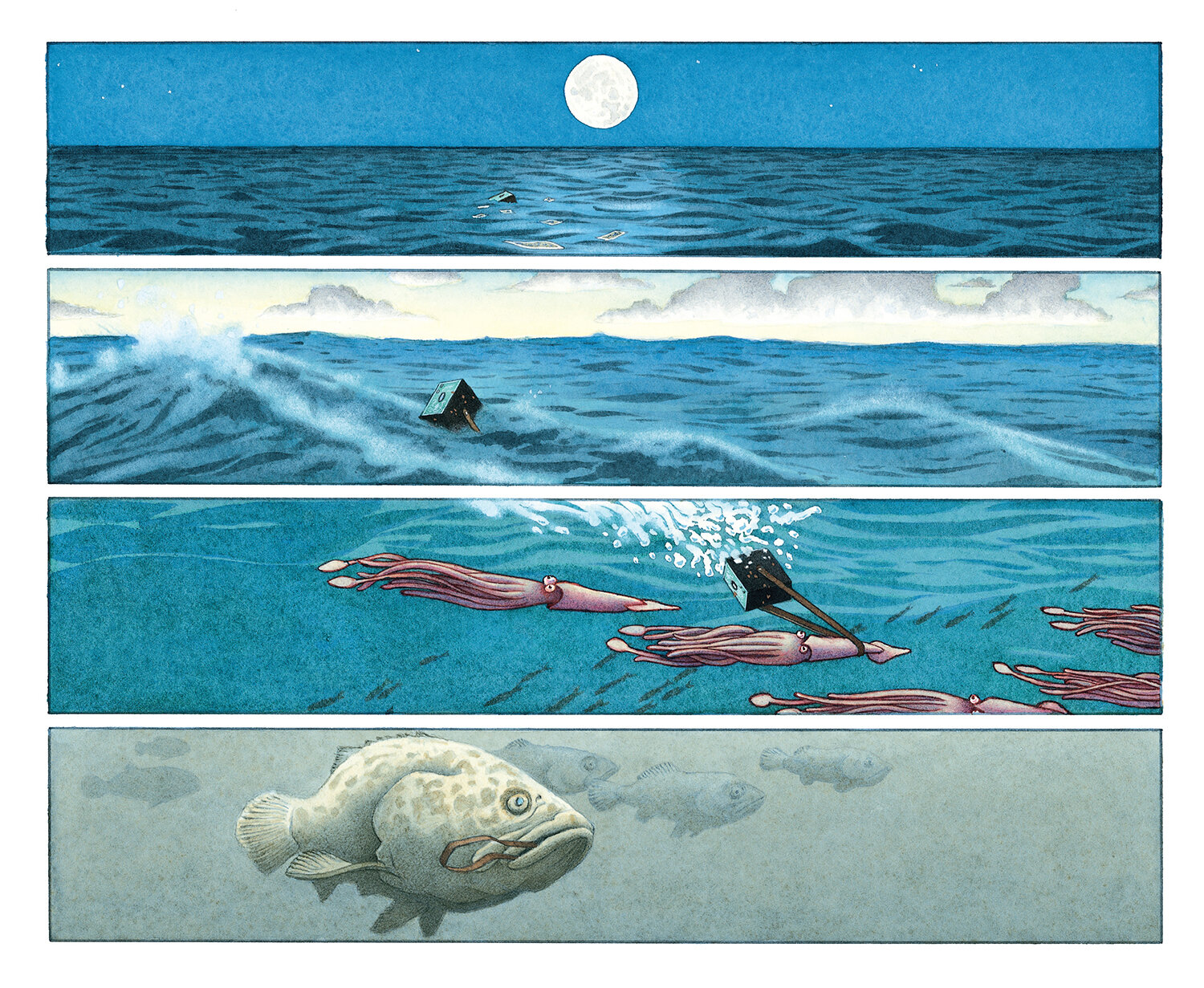
Flotsam, page 34
Painting: “In my preparatory drawings I carefully compose the image and delineate everything that will be in it. I then transfer that drawing to my stretched watercolor paper. I have a sheet of tracing paper with one side covered in powdered graphite. I lay that sheet graphite side down on the watercolor paper and put my line drawing on top of that. I then redraw the image using a hard 4h or 5h pencil. The impression leaves a very light graphite line on the watercolor paper. I then begin to paint – the fourth stage of my process. As layers of paint are applied and dry, new layers that abut the existing layers and overlap a bit form a line of sorts. It is subtler and less hard and pronounced than an ink line. I model the forms more, initially through a warm and cool underpainting, than I would if an ink line were there. I like controlling the boundaries between the objects with paint. I can decide how defined I want the edges to be through how I work with light and dark, warm and cool, and color.” - DW
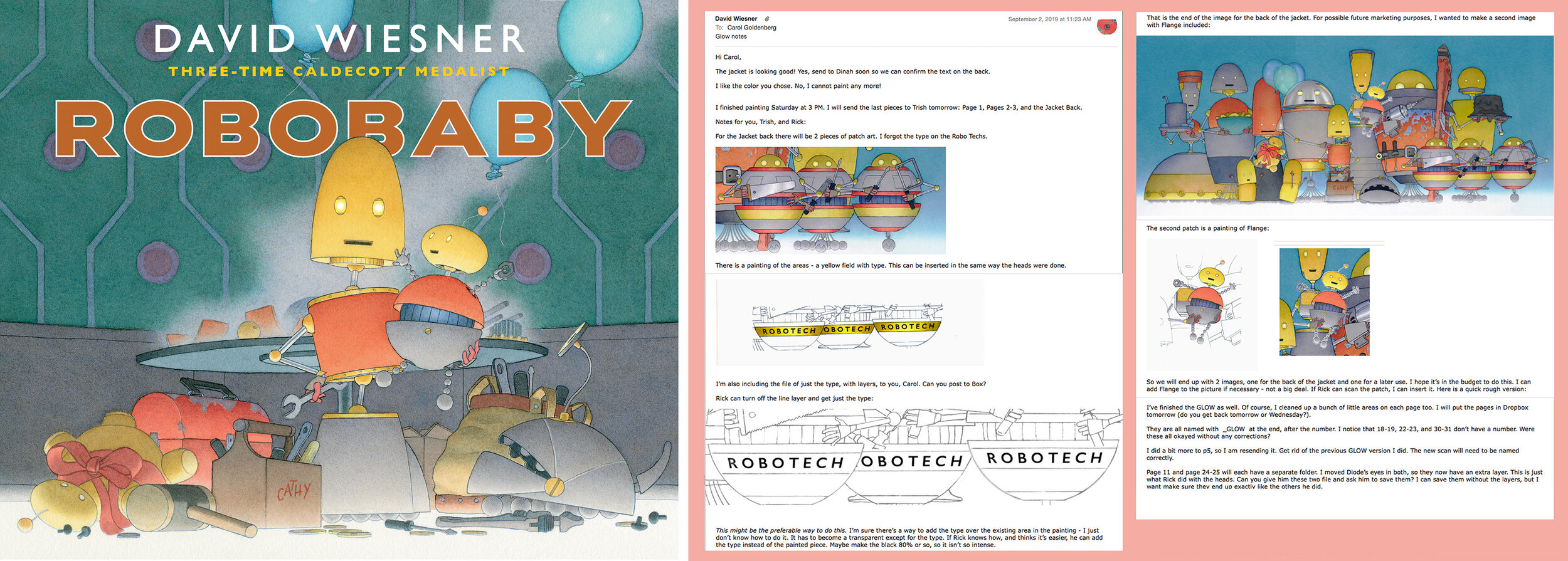
Sneak peak into Wiesner's emails with designer, Carol Goldenberg, to finalize Robobaby.
From Painting to Print: “I create my paintings only thinking how to achieve what I think works best for the painting. But, of course, those paintings are going to be reproduced by a completely different set of materials. I work in transparent watercolor, but the book will be printed using opaque inks. I am fortunate to have been able to go on press when my books were printed. I learned a lot from watching Donna McCarthy, the head of production, and Carol Goldenberg, the designer. I got to understand the process and realize the limitations and compromises. An entire picture book is printed on one sheet of paper. Adjusting the color for one page will affect the color of any other page in the same channel of ink. A perfect color match is simply not possible. Ultimately, the finished book is a combination of many disciplines: painting, drawing, graphic design, and typography. The paintings are just one part of the process. During printing we eventually stop looking at the original art and focus only on the printed page.” -DW
This exhibition was supported by Swiacki Children's Literature Festival at Framingham State University. For more information about the artist visit David Wiesner’s website.




